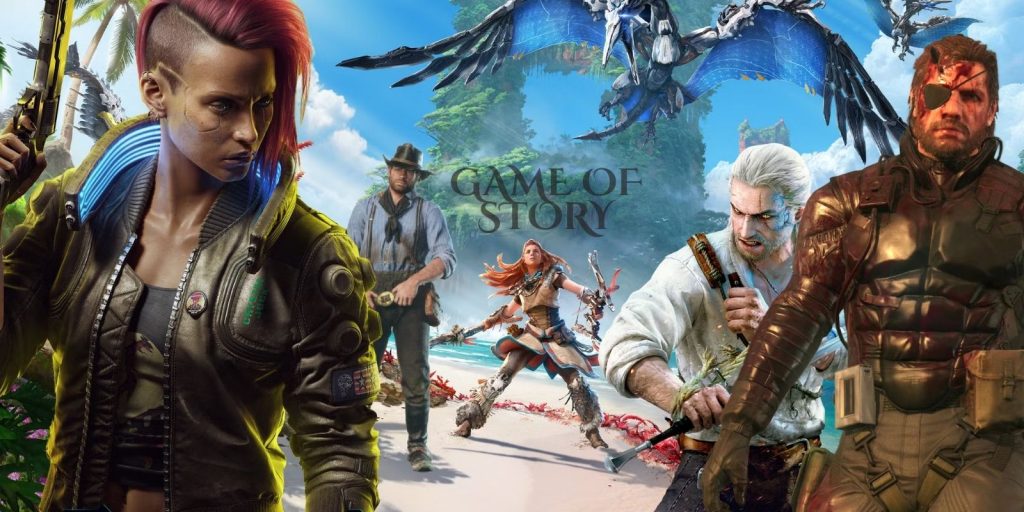In an era of photorealistic graphics and complex mechanics, the most powerful tool in a developer’s arsenal remains the ancient art of storytelling. The modern game of story represents a genre where narrative is not a mere backdrop but the core interactive mechanic itself.
These are worlds where your choices carve out unique paths, where character relationships serve as a resource to manage, and where uncovering the plot is the primary driver of engagement. This is the captivating realm of narrative-driven storytelling.
How a Game of Story Works?
Unlike games where story is delivered through cutscenes separating gameplay segments, a true game of story weaves its narrative directly into the player’s actions. The “gameplay” is the act of shaping the tale. This is achieved through several key systems:
- Branching Dialogue: Your conversations are a puzzle. Choosing specific responses can unlock new quests, alter a character’s loyalty, or lead to dramatically different endings. Games like Disco Elysium or the Life is Strange series elevate this into the main event.
- Moral Choice Systems: The game presents you with complex, often lose-lose scenarios. There is no “right” answer, only consequences that ripple through the entire narrative, testing your ethics and making your version of the story uniquely yours.
- Environmental Storytelling: The plot isn’t just told through words; it’s hidden in the world. Reading a discarded journal entry, observing the layout of a deserted room, or piecing together evidence at a crime scene are all active gameplay mechanics that advance the game of story.
This design philosophy transforms the player from a spectator into a co-author. The tension doesn’t just come from overcoming a challenge, but from living with the emotional weight of your decisions.
Beyond the Mainstream: Exploring Niche Narratives
The expansive umbrella of a game of story also covers more niche experiences. For instance, you might encounter stories of tie-up games that focus on tension, negotiation, and escape within a narrative framework, often in thriller or mystery settings.
Furthermore, many games blur the line between fiction and reality, leading players to wonder about their origins. A perfect example is the question, is for the love of the game a true story? While the 1999 film is fictional, this query highlights a common desire to connect deeply with the narratives we experience, seeking truth in the tales we are told.
Finding and Downloading Your Next Narrative Adventure
The beauty of narrative games is their accessibility; many are designed to be experienced without demanding lightning-fast reflexes, making them perfect for a wide range of players.
- Platform Stores: Digital storefronts are the primary source. Steam, GOG, the Epic Games Store, and console marketplaces (PlayStation Network, Nintendo eShop, Xbox Store) have extensive “Story-Rich” or “Narrative” categories. Here you’ll find everything from AAA blockbusters like The Witcher 3 to celebrated indie darlings like What Remains of Edith Finch.
- Subscription Services: Services like Xbox Game Pass and PlayStation Plus frequently add acclaimed narrative games to their libraries, offering a fantastic risk-free way to experience a new game of story.
- Curated Lists: Websites like PC Gamer or dedicated subreddits are excellent for discovering hidden gems based on your preferred sub-genre, whether it’s horror, romance, or detective noir.
When choosing a title, pay close attention to player reviews that specifically discuss the narrative depth, character development, and the impact of choices—these will be your best indicator of quality.
The Enduring Power of Interactive Tales
The game of story proves that interactivity is the ultimate vehicle for empathy. By placing us directly in the shoes of the protagonist and forcing us to make difficult decisions, these games create a personal connection to the narrative that film or literature cannot replicate.
They are memorable not for the bosses we defeated, but for the characters we loved, the sacrifices we made, and the unique stories we lived. In the end, the most rewarding loot is a tale well told.
FAQs:
- What does “stories of tie-up games” refer to?
This typically refers to narrative-driven games, often in the horror or thriller genres, where a core mechanic involves being captured or restrained, and the story revolves around escape, negotiation, and survival. The narrative tension is derived from the player’s vulnerable position. - Is “For the Love of the Game” a true story?
No, the film For the Love of the Game (1999), starring Kevin Costner, is a work of fiction. However, its realistic portrayal of a pitcher’s mindset and the world of professional baseball leads many to ask this question, a testament to how powerful stories can feel authentic. - Are these games less “gamey” because they focus on story?
Not at all. The challenge is simply redirected from physical skill to intellectual and emotional engagement. Players must solve dialogue puzzles, manage resources like trust or information, and think critically about the long-term consequences of their actions.
For more deep dives into the world of narrative gaming and to find your next unforgettable adventure, make Playistan.com your first stop.




